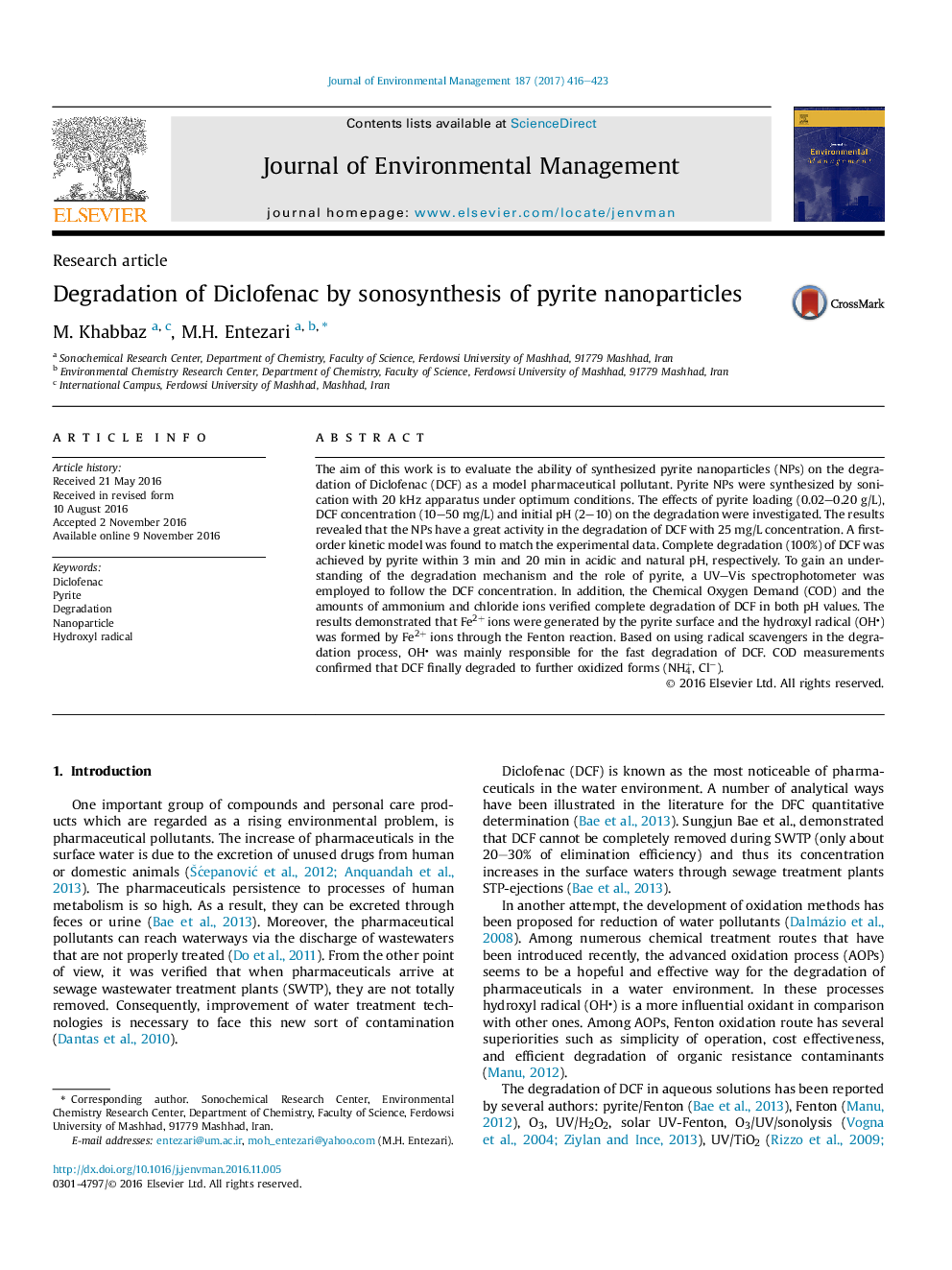| Article ID | Journal | Published Year | Pages | File Type |
|---|---|---|---|---|
| 5117390 | Journal of Environmental Management | 2017 | 8 Pages |
â¢Pyrite nanoparticles synthesized by ultrasound under optimum conditions.â¢Complete degradation of Diclofenac achieved by pyrite nanoparticles in 3 min.â¢Based on using radical scavengers, OH was mainly responsible for degradation of DCF.â¢A pseudo-first-order kinetic model fitted with experimental data.
The aim of this work is to evaluate the ability of synthesized pyrite nanoparticles (NPs) on the degradation of Diclofenac (DCF) as a model pharmaceutical pollutant. Pyrite NPs were synthesized by sonication with 20Â kHz apparatus under optimum conditions. The effects of pyrite loading (0.02-0.20Â g/L), DCF concentration (10-50Â mg/L) and initial pH (2-10) on the degradation were investigated. The results revealed that the NPs have a great activity in the degradation of DCF with 25Â mg/L concentration. A first-order kinetic model was found to match the experimental data. Complete degradation (100%) of DCF was achieved by pyrite within 3Â min and 20Â min in acidic and natural pH, respectively. To gain an understanding of the degradation mechanism and the role of pyrite, a UV-Vis spectrophotometer was employed to follow the DCF concentration. In addition, the Chemical Oxygen Demand (COD) and the amounts of ammonium and chloride ions verified complete degradation of DCF in both pH values. The results demonstrated that Fe2+ ions were generated by the pyrite surface and the hydroxyl radical (OH) was formed by Fe2+ ions through the Fenton reaction. Based on using radical scavengers in the degradation process, OH was mainly responsible for the fast degradation of DCF. COD measurements confirmed that DCF finally degraded to further oxidized forms (NH4+, Clâ).
Graphical abstractDownload high-res image (248KB)Download full-size image
